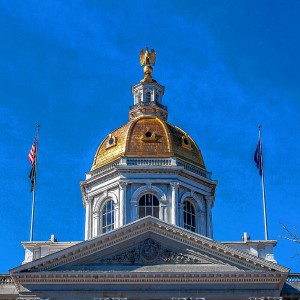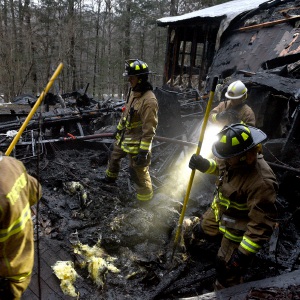Vermont House approves 2026 budget with eye toward more federal cuts
| Published: 04-01-2025 11:00 AM |
MONTPELIER — The Vermont House on Friday passed its version of the state budget for the 2026 fiscal year, including a proposal that would let top lawmakers access more state dollars to plug feared future losses in federal funding. The bill now heads to the Senate for further consideration and then would go before Gov. Phil Scott.
The “big bill,” H.493, would allow the state’s Emergency Board to use a portion of the state’s “rainy day” fund to reduce the impacts of potential federal cuts. The board, which includes the governor and the chairs of the Legislature’s four taxing and spending committees, is able to meet when legislators aren’t in session.
Language in the budget bill would also require Scott’s administration to develop a plan to shore up state coffers, in consultation with another panel of lawmakers that can meet outside of the legislative session, under certain other circumstances. The administration would have to consult with that panel, called the Joint Fiscal Committee, any time the state government lost at least 1% of its total federal funding in a given fiscal year — a percentage that currently amounts to just over $30 million.
It’s not clear exactly how much federal funding is at risk from sweeping cuts that President Donald Trump’s administration has proposed, or is already making. But it is clear, lawmakers have said, that the impact to the state’s budget — of which about a third comes from the federal government in a given year — could be substantial.
Under current law, the joint fiscal panel and emergency board’s authority is largely built to respond to recessions, Rep. Emilie Kornheiser, a Brattleboro Democrat who chairs the joint fiscal committee, told House budget-writers in a meeting late last week.
“But it’s not as responsive to massive changes in federal obligations,” she said, adding, “we want to be sure that when we leave this building, we are able to be flexible.”
The state’s “rainy day” fund has just shy of $100 million in it today. Some state agencies have already reported losing federal funds, or learned that appropriations they’ve been expecting to receive are under review, including money to support vaccine programs, electric vehicle infrastructure, forestry projects and resources for local libraries.
Possibly the greatest threats to state coffers, though, are potential cuts to Medicaid funding that Republicans in the U.S. Congress have been weighing in recent weeks to fund Trump’s domestic policy agenda, including extending a 2017 slate of tax breaks.
Article continues after...
Yesterday's Most Read Articles
 After a year of looking, White River Junction couple finds new home
After a year of looking, White River Junction couple finds new home
 NH Republicans move forward with three different plans to expand EFAs
NH Republicans move forward with three different plans to expand EFAs
 Fires destroy two Upper Valley homes
Fires destroy two Upper Valley homes
Vermont could lose hundreds of millions of dollars a year under different proposed cuts to Medicaid programs that are gaining momentum in Washington, D.C., said Ashley Berliner, the state’s director of Medicaid policy, speaking to legislators last week.
Berliner emphasized that it wasn’t clear which of those proposals, if any, would make it into law, or when — but said the state “clearly” does not have enough money on its own to provide its current level of Medicaid-backed services without federal support.
If the Vermont House’s plan to respond to federal changes becomes law, it would take effect at the start of the 2026 fiscal year on July 1. Nearly all of the other measures in the chamber’s spending plan would take effect at the beginning of July, as well.
Overall, the House’s budget proposal totals about $9.06 billion — slightly higher than the $8.99 billion budget for 2026 that Scott proposed earlier this year. A large portion of the House’s increased spending would allow the state to draw down additional federal Medicaid dollars, including a bump in the rates paid to certain health care providers.
The budget includes Scott’s request to set aside $77 million to buy down property taxes in the upcoming fiscal year, as well as another proposal to send $4 million to the Agency of Education to support the administration’s sweeping education reform proposal.
Budget-writers also agreed to Scott’s ask to eliminate a standing transfer of cash from the state’s transportation fund — which supports roads, bridges and public transit — to the state’s general fund in an effort to offset rising transportation costs.
Notably, though, the House also included $18.5 million to continue funding the state’s universal school meals program, which Scott proposed cutting to support his proposed property tax buydown. Another measure added to the budget in the House would use $4.5 million to boost state subsidies for providers of infant and toddler child care.
House leaders lauded the bill on the floor Thursday, ahead of its initial approval, as an example of bipartisan compromise because it cleared the chamber’s appropriations committee on a unanimous vote.






 Hartford Selectboard mulls closing road off Sykes Mountain Ave
Hartford Selectboard mulls closing road off Sykes Mountain Ave Chris Pappas announces bid to succeed Shaheen in US Senate
Chris Pappas announces bid to succeed Shaheen in US Senate Dartmouth Health creates inpatient psychiatric ward for teenagers
Dartmouth Health creates inpatient psychiatric ward for teenagers
